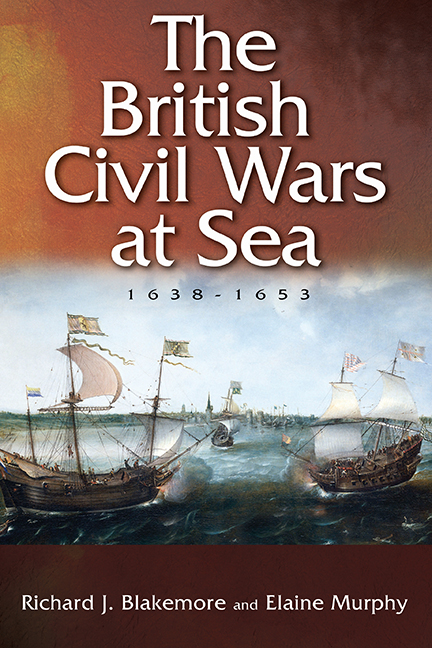Book contents
- Frontmatter
- Dedication
- Contents
- List of Illustrations
- Preface and Acknowledgements
- List of Abbreviations
- Map
- Introduction
- 1 Warfare at Sea in the Early Modern Period
- 2 The Outbreak of War, 1638–1642
- 3 The War at Sea, 1642–1646
- 4 Parliament's Navy, 1642–1646
- 5 Royalist, Confederate, and Scottish Naval Efforts, 1642–1653
- 6 Revolution, 1647–1649
- 7 Conquest, 1649–1653
- Conclusion
- Appendix 1 Timeline of the Civil Wars at Sea, 1638–1653
- Appendix 2 Parliamentarian Fleets, 1642–1649
- Bibliography
- General Index
- Index of Ships
Conclusion
Published online by Cambridge University Press: 19 July 2019
- Frontmatter
- Dedication
- Contents
- List of Illustrations
- Preface and Acknowledgements
- List of Abbreviations
- Map
- Introduction
- 1 Warfare at Sea in the Early Modern Period
- 2 The Outbreak of War, 1638–1642
- 3 The War at Sea, 1642–1646
- 4 Parliament's Navy, 1642–1646
- 5 Royalist, Confederate, and Scottish Naval Efforts, 1642–1653
- 6 Revolution, 1647–1649
- 7 Conquest, 1649–1653
- Conclusion
- Appendix 1 Timeline of the Civil Wars at Sea, 1638–1653
- Appendix 2 Parliamentarian Fleets, 1642–1649
- Bibliography
- General Index
- Index of Ships
Summary
In April 1655 a ship that bore the name of one of the most important battles of the civil wars, the Naseby, was launched. Lorrenzo Paulucci, the Venetian Secretary to England, described the event:
Only yesterday His Highness's galleon was launched in the presence of his entire household and his chief councillor. It has been built regardless of cost, of marvellously rich construction, carrying 120 guns great and small and costing 150,000l. sterling …
He continued:
England now claims to be more powerful at sea than any other power, and more abundant in war ships, as the Protector fully realises that great strength at sea may support him on land also, and bring him friendship and repute in every part of the world as it actually is doing.
The diarist John Evelyn also viewed the newly launched Naseby, and wrote a well-known account of what he saw and thought of the ship, and what it stood for:
I went to see the great ship newly built by the usurper, Oliver, carrying ninety- six brass guns, and 1,000 tons burden. In the prow was Oliver on horseback, trampling six nations under foot, a Scot, Irishman, Dutchman, Frenchman, Spaniard, and English, as was easily made out by their several habits. A Fame held a laurel over his insulting head; the word, God with us.
There is considerable irony in how much the size, ceremonial launching, and iconography of the Naseby resemble Charles I's Sovereign of the Seas: the figurehead of the later ship may even have been deliberately modelled on that of the Sovereign, which featured King Edgar trampling seven kings. It is also rather appropriate that, where Charles I harked back to a medieval predecessor, the Protector proclaimed himself. In 1639, despite a decade of governmental support and royal attention, Charles I's navy could not enforce the king's claim to sovereignty over his territorial waters, and the English fleet was a bystander as the Dutch and Spanish fought each other at the battle of the Downs.4 Yet in the space of fourteen war-torn years, between 1639 and 1653, the English navy had become the pre-eminent naval force in Europe, and a key pillar of the Commonwealth. By 1655 it was the strength and successes of the navy that kept the Dutch, French, and Spanish at bay.
- Type
- Chapter
- Information
- The British Civil Wars at Sea, 1638–1653 , pp. 173 - 178Publisher: Boydell & BrewerPrint publication year: 2018

